

Max Davies
2026 Toyota HiAce review
48 Minutes Ago
This big, expensive electric shuttle will suit some executive transfer companies, just do your homework to make sure it meets your needs.
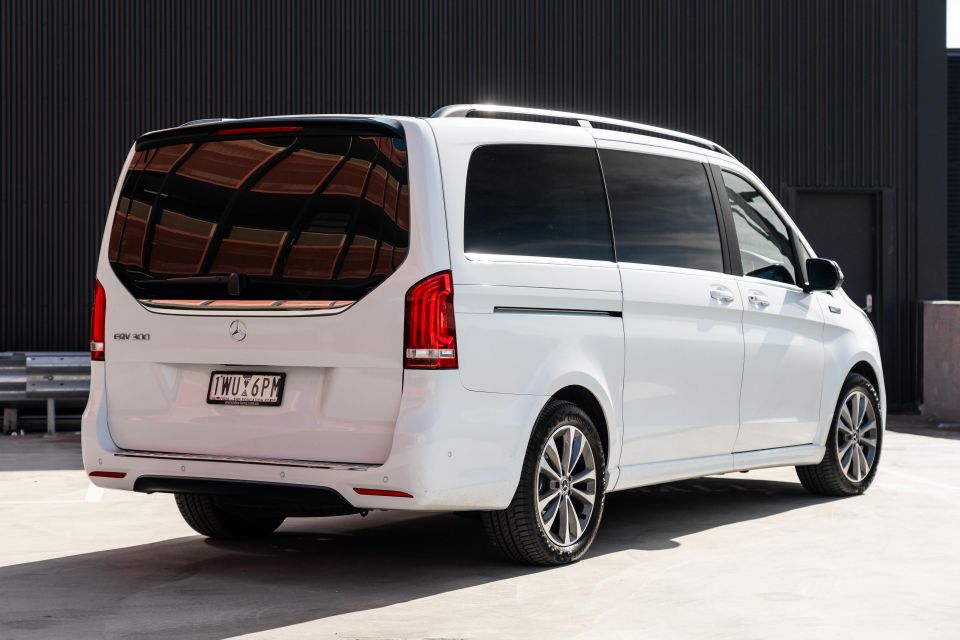

Senior Contributor

Senior Contributor


Senior Contributor

Senior Contributor
Where expert car reviews meet expert car buying – CarExpert gives you trusted advice, personalised service and real savings on your next new car.
The Mercedes-Benz EQV is billed as Australia’s first all-electric luxury people-mover, a behemoth in large part designed for high-end transfer and shuttle businesses.

While it’s around $40,000 more expensive than the most affordable V-Class diesel, its reduced running costs and emissions will no doubt appeal to many businesses – and perhaps even the odd well-heeled private buyer with a big family.
With a real-world range exceeding 300km and whisper-quiet operation, it’s a relaxing shuttle that will suit some operators to a tee.
The Mercedes-Benz EQV has a steep list price of $155,338 before on-road costs (including GST and LCT). In Victoria, that equates to an expected drive-away price of $162,800.
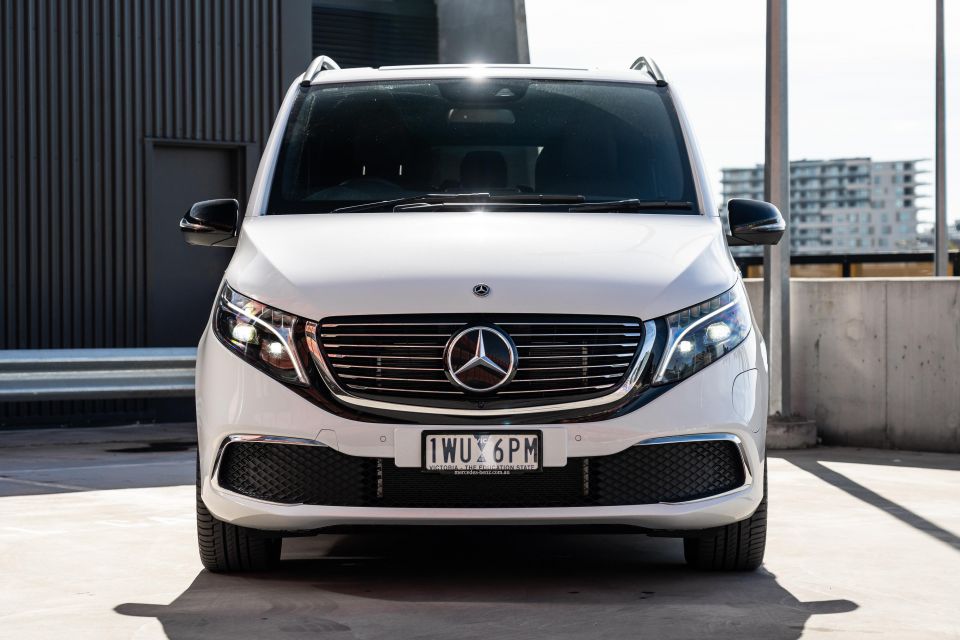
The equivalent diesel-powered Mercedes-Benz V-Class V250d costs $111,252 before on-roads, or $122,400 drive-away, while the flagship V300d AMG Avantgarde is $132,490 list or $144,500 drive-away.
This makes the EQV somewhere between $20,000 and $40,000 more expensive than a V-Class diesel, depending which spec and engine tune you opt for.
There’s a way to get into a Mercedes electric people mover for similar money to this too, by going for the mechanically identical eVito Tourer with a $116,115 list price.
Another competitor is the LDV MIFA 9 at between $106,000 and $131,000 before on-roads.
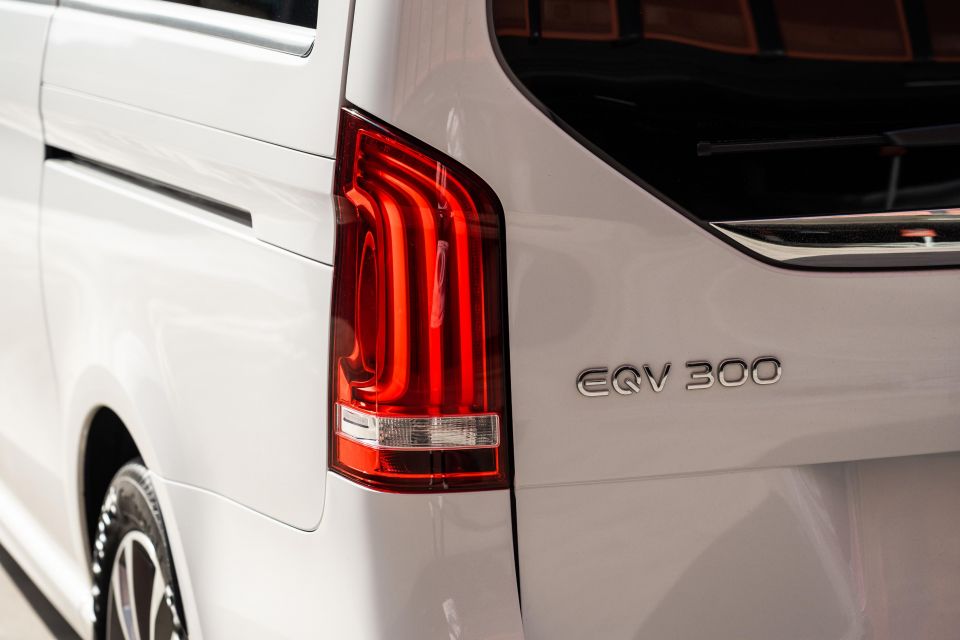
2023 Mercedes-Benz EQV pricing:
Pricing is before on-road costs, but includes luxury car tax
Buy your new car without the stress. It's fast, simple and completely free.

Great service from Travis and team, second time I have used this business would not hesitate to recommend them to anyone
Craig C.
Purchased a Ford Ranger in Sunshine Coast, QLD
CarExpert helped Craig save thousands on his Ford Ranger, now let us save you on your next new car.
Find a dealIt certainly feels a bit more special inside the EQV than your typical shuttle, and in terms of useable space it puts any luxury SUV to shame. However the absence of a proximity-sensing key fob and button start system feels incongruous.
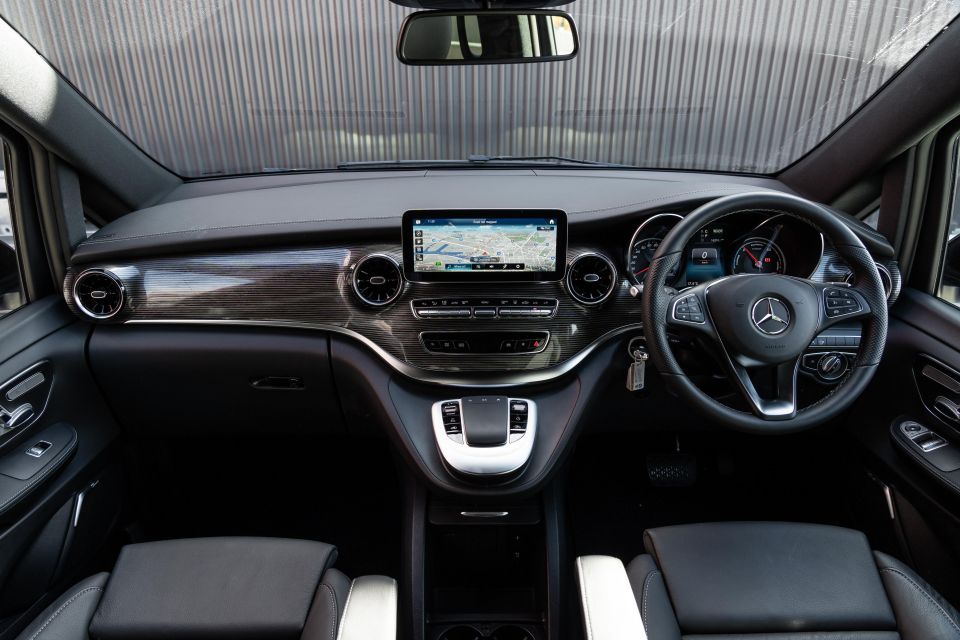
Both front leather seats are powered, have lumbar and thigh adjustments, memory presets, and are heated – a good way to reduce power use. They also have pull-down armrests in lieu of a centre console.
The leather-wrapped steering wheel tilts and telescopes, while behind it are analogue gauges (a speedometer and power/boost meter) flanking a digital display with speed, trip and efficiency data readouts.
Mercedes-Benz makes some unique ergonomic decisions in its cabins, such as fitting a gear shifter on the steering column and seat adjustment buttons on each door, but you adapt quickly.
The anthracite and ebony fake wood dash inlay and the silver plastic switches and trim pieces add some welcome warmth and design nous, as do the brand-signature turbine-like air vents.
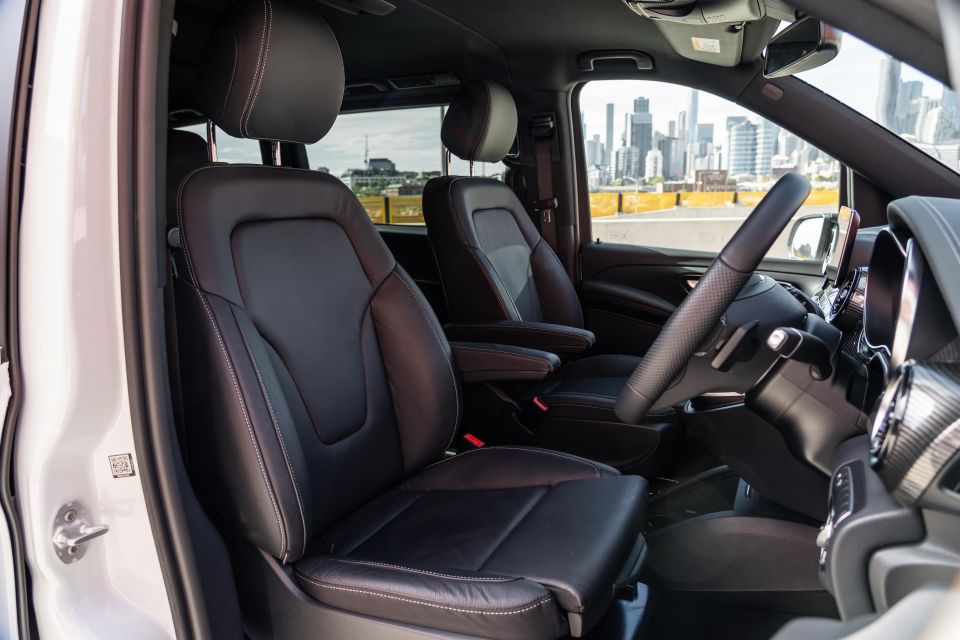

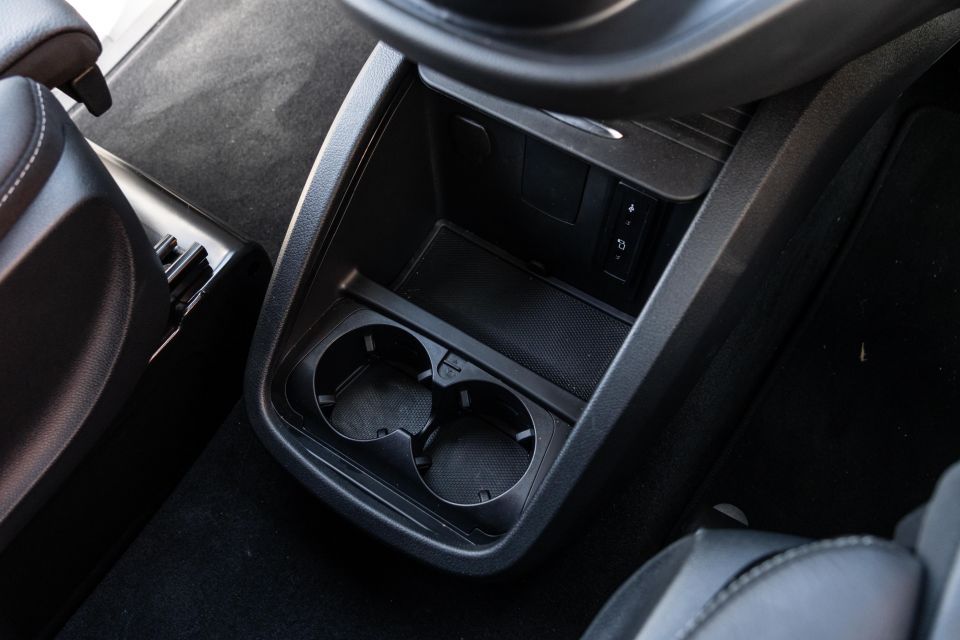
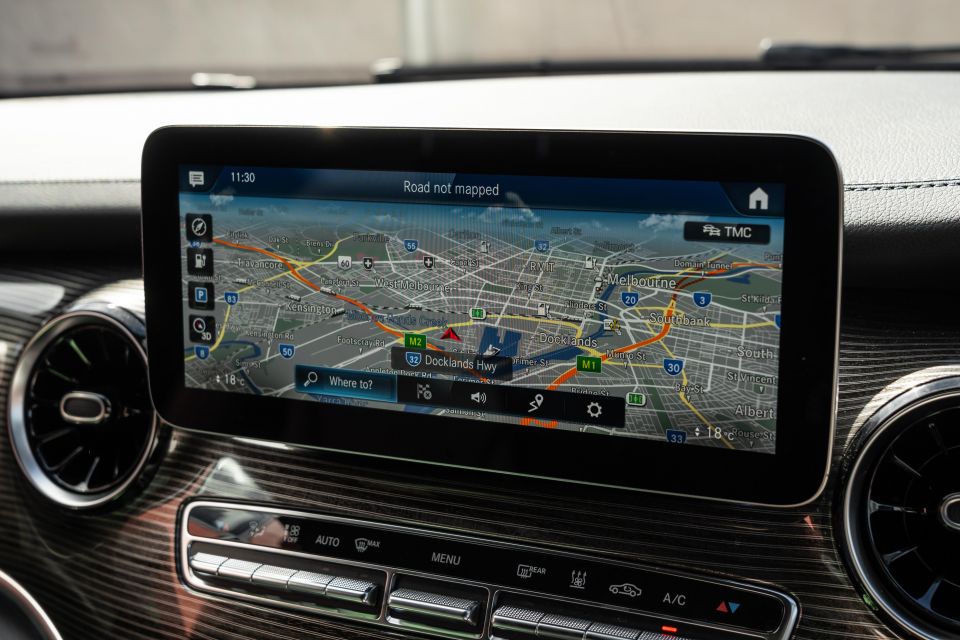
The 10.25-inch touchscreen is top-end, with high-resolution graphics and a voice assistant activated by saying “Hey Mercedes”. It’s capable of controlling most functions, from the climate to the address of a destination, or requesting a point-of-interest such as a fast charger.
There’s also a 360-degree camera with various angles, animated consumption meters, ambient interior lighting controls, and a vibe-enhancing Burmester sound system with speakers for each row of seats.
One downside is there’s no AM receiver, and those channels on DAB don’t work in all regional areas. I suppose you can always stream the footy or cricket commentary, or ABC community broadcasts…
Below the screen are rocker switches for climate controls, and other shortcut buttons to take you straight to various menus such as phone, audio, navigation, radio and car settings.
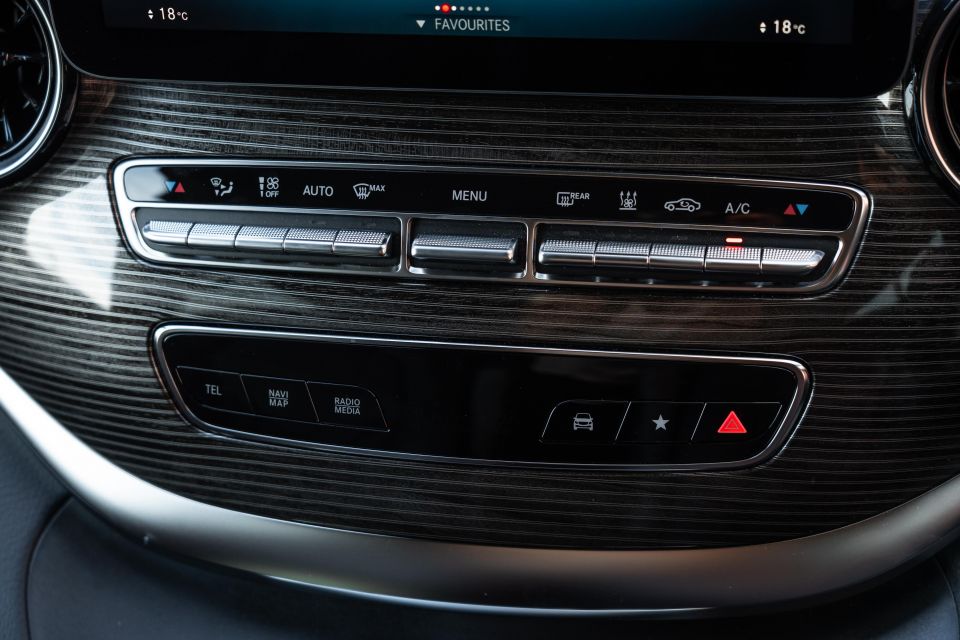
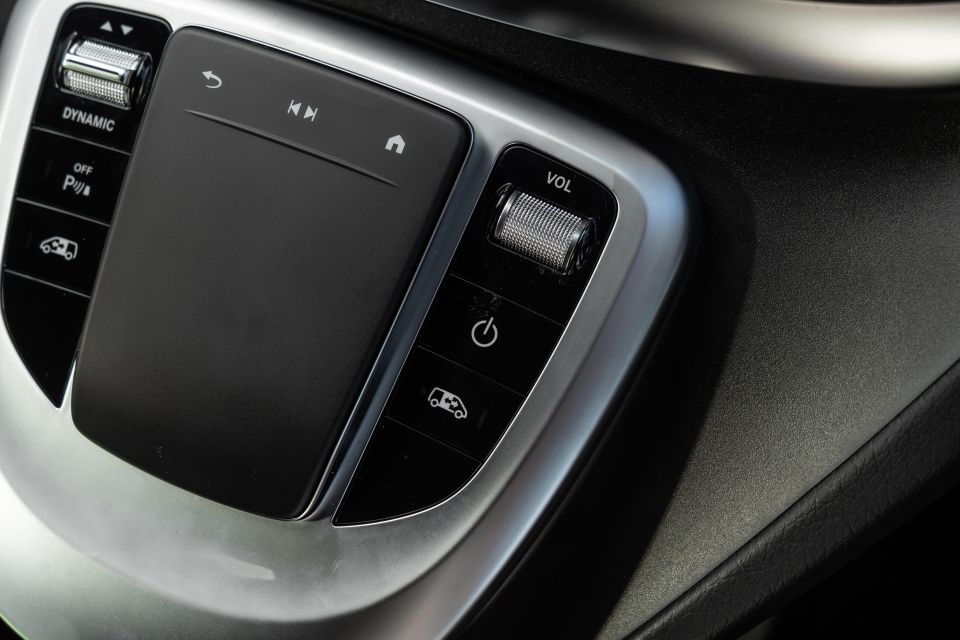
Under this is a plastic touchpad a bit like a laptop mouse if you don’t like touchscreens, flanked by buttons for the electric sliding rear doors and the driving mode selector.
Given its van origins there’s plenty of storage such as the huge cubby below the dash containing cupholders and USB-C ports, with a sliding cover. There are also various big open sections in each door and a large glovebox.
Access to the second row is via large sliding doors with motors. There are two captain’s chairs with armrests, which have tilting backrests, and slide on rails. There are overhead vents and reading lights, separate temperature controls in the roof, and ISOFIX anchors with top tethers.
There’s acres of room and large side windows, but the lack of USB ports or even 12V ports for the middle occupants is worth noting, given passengers may want to charge their phone or tablets.
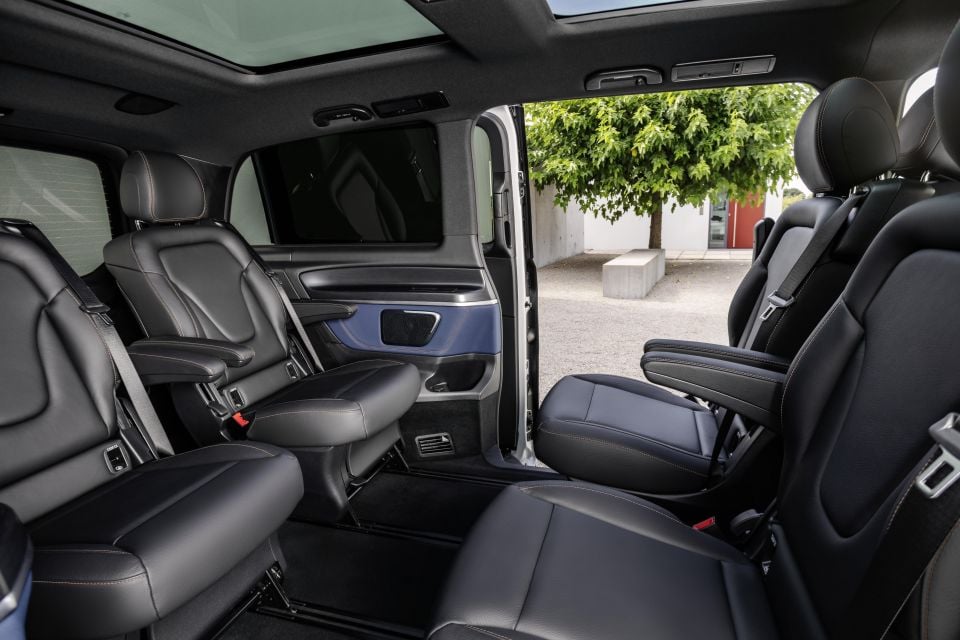
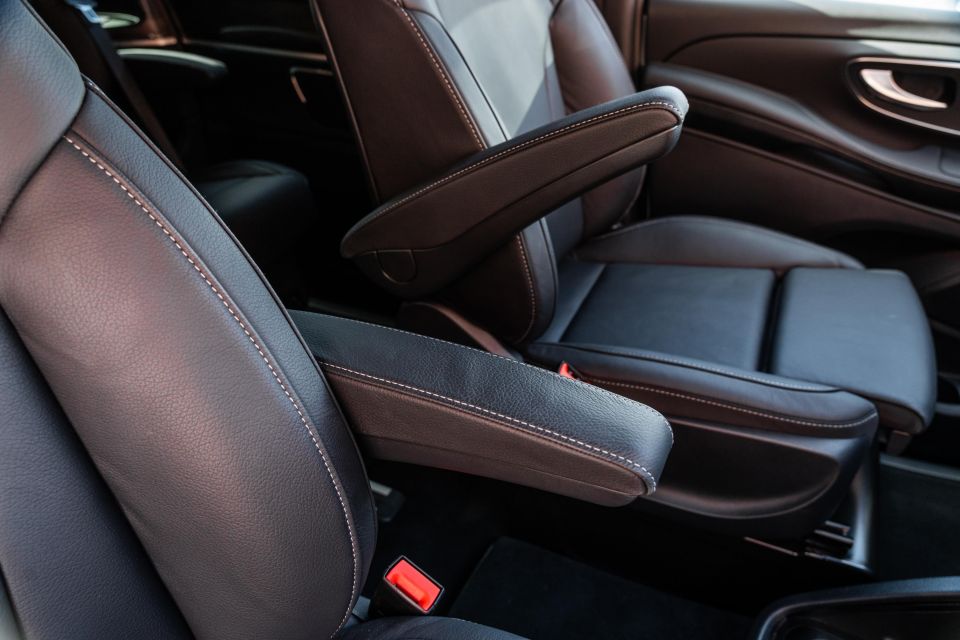
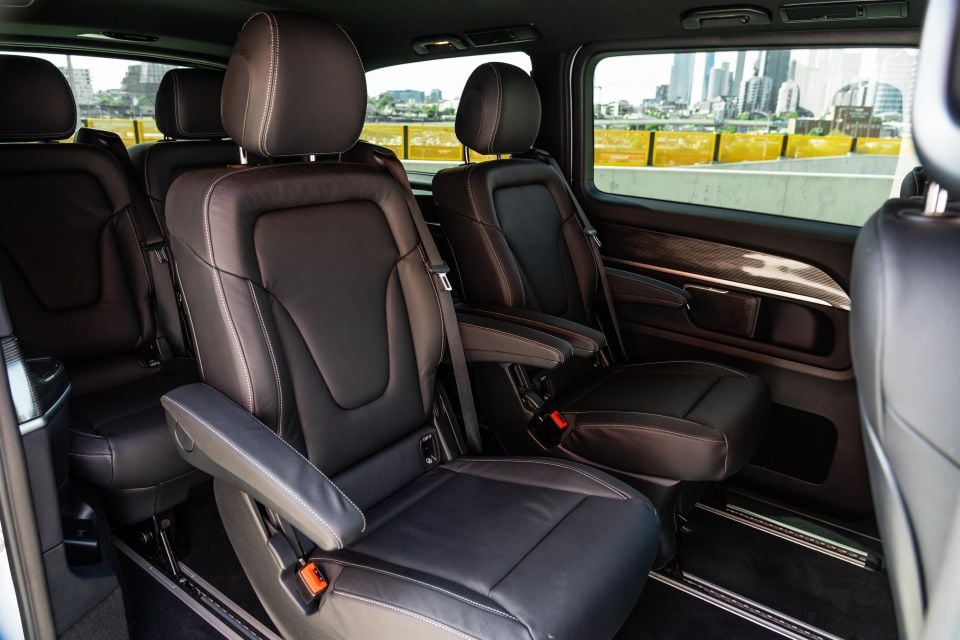
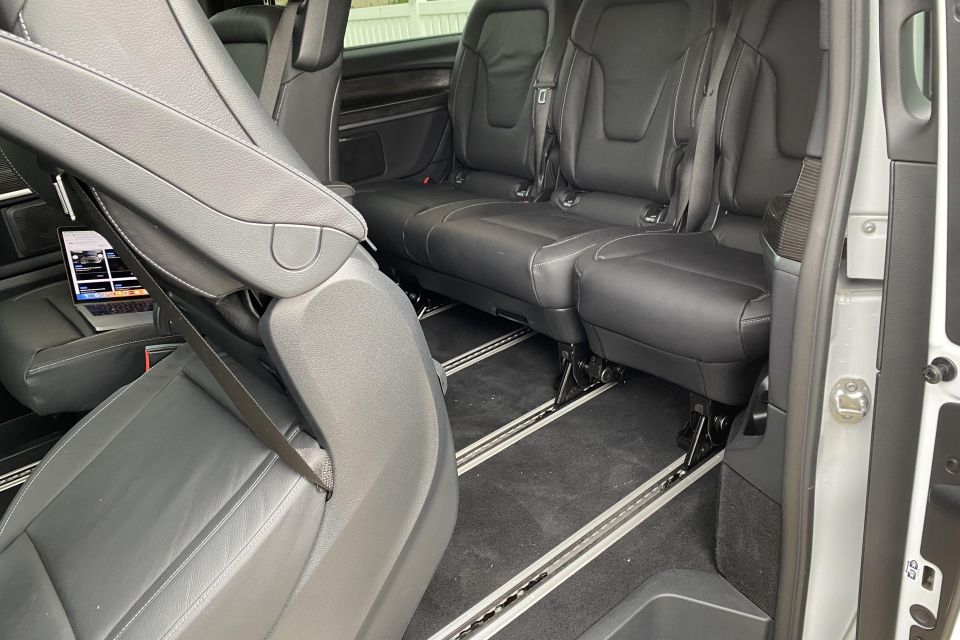
Access to the less luxurious third seating row – with three seats, bringing the total to seven – is a cinch, with each middle-row chair able to effortlessly tumble forward on a frontal hinge when you pull a small handle. You can do it with two fingers.
All three back seats’ backrests can tilt independently of the others, and with the middle row chair slid slightly forward there’s ample room for three grown adults. Indeed, I ferried around seven occupants without complaint from any.
Two of the rearmost seats have ISOFIX anchors (four in total) and all have top tethers, while the side head-protecting airbags deploy the entire length of the cabin.
You can also opt for an EQV with individual captain’s chairs in both rear seating rows if you want a deluxe six-seater.
I do wonder if it’s a bit cheeky for Mercedes-Benz to charge the best part of $4000 for a two-pane panoramic sunroof. A luxury shuttle ought to have this as standard, surely, with the ability to opt-out.
The massive tailgate is power operated and high enough for me (at 194cm or 6ft 4) to walk under without stooping. The boot also has a clever carpeted tabletop for soft bags that can be folded away, with an open centre with folding plastic storage helpers hidden away.
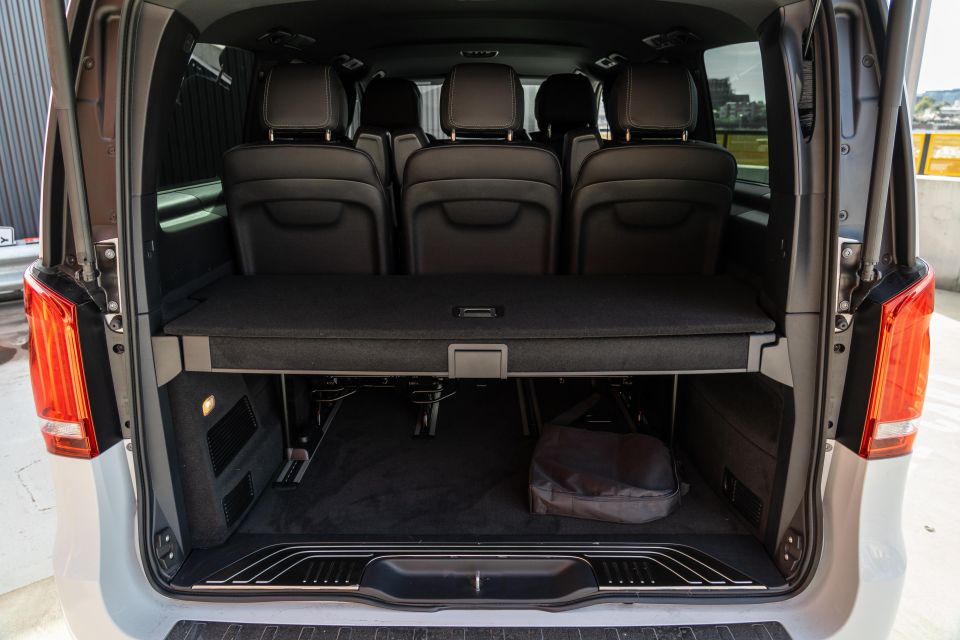
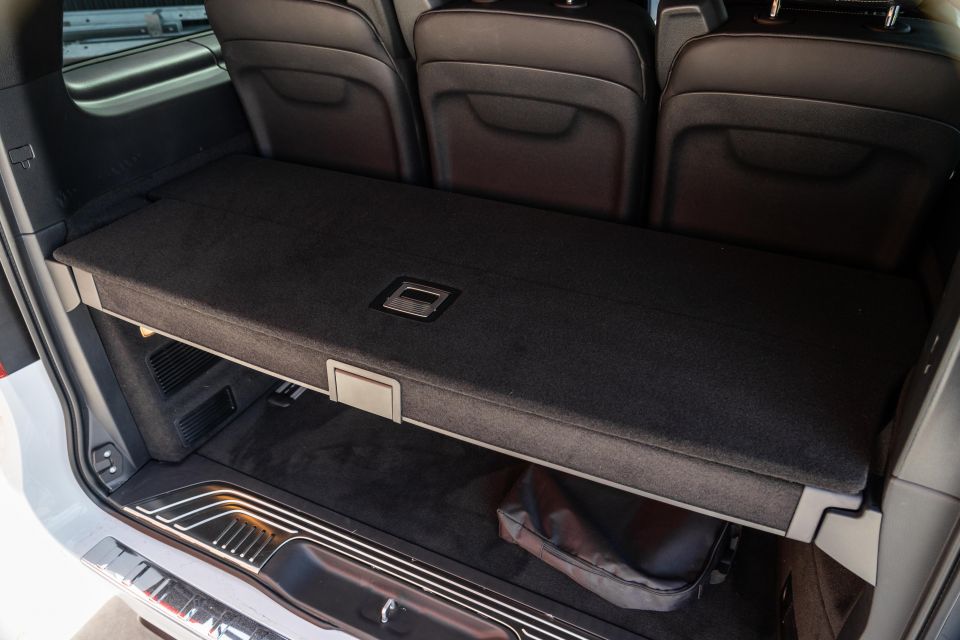
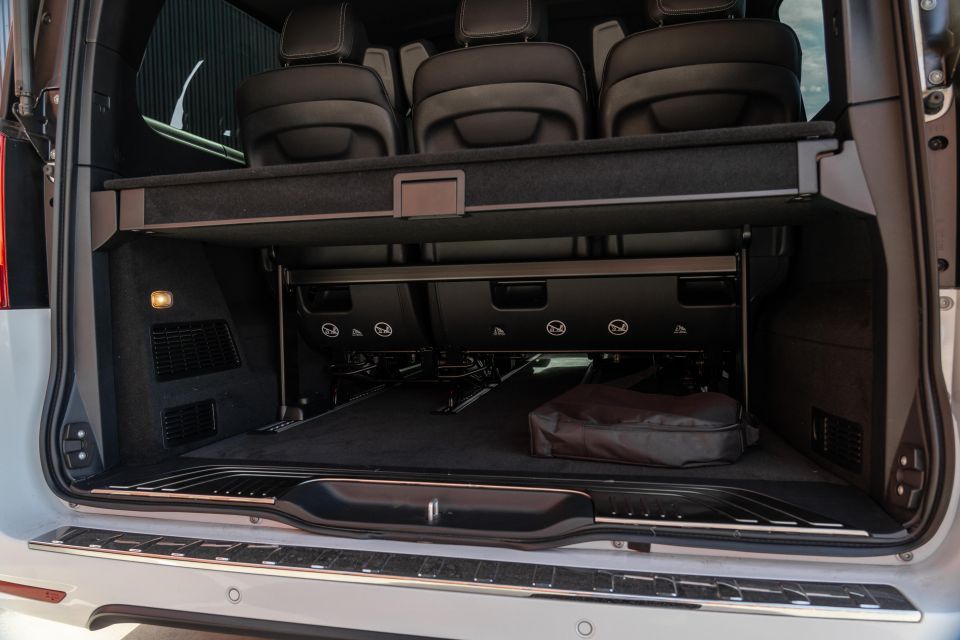
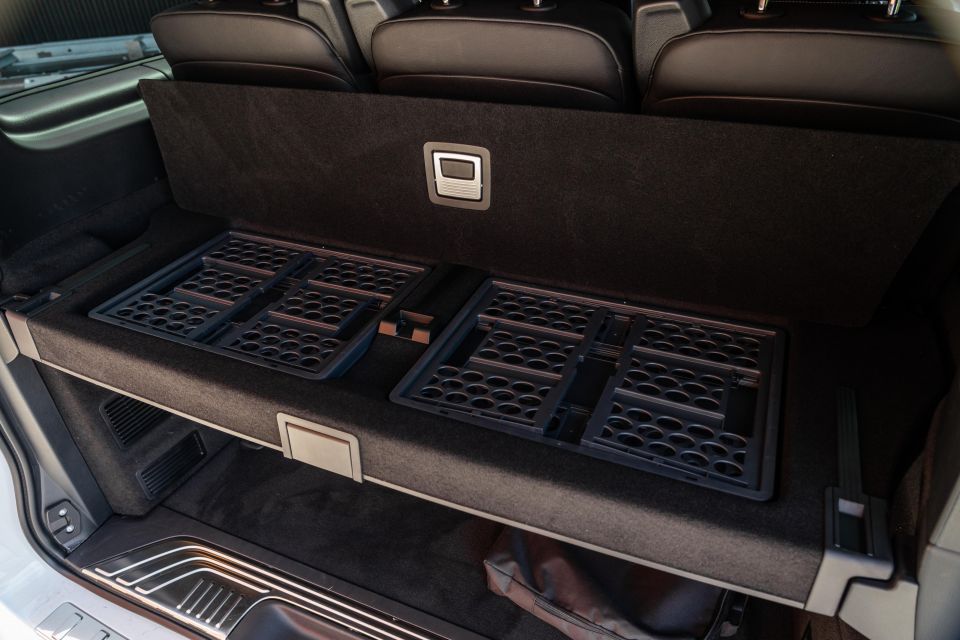
This table can easily be removed because it’s mounted to the sliding rails, while the rearmost seats can be folded down and slid forwards and backwards via levers.
The boot is big enough for suitcases, unlike most three-row SUVs, offering up to 1030L of space and a 1326mm maximum loading space height.
However, while there are three 12V outlets in the rear seating row and boot area, I wonder why there’s no power plug using vehicle-to-load power. It would seem like a home run, and good way to further leverage the battery pack given hire car drivers spend plenty of time sitting around.
The spare tyre mounted behind the rear axle is a 225/55 R17 Continental which, while not the same size as those fitted (245/50 R18), is at least better than a skinny space-saver or tyre repair kit.
The front-wheel-drive electric motor outputs 150kW and 365Nm, giving a stately 0-100km/h capability of 12.1 seconds (less with a load of passengers of course) and 140km/h top speed.
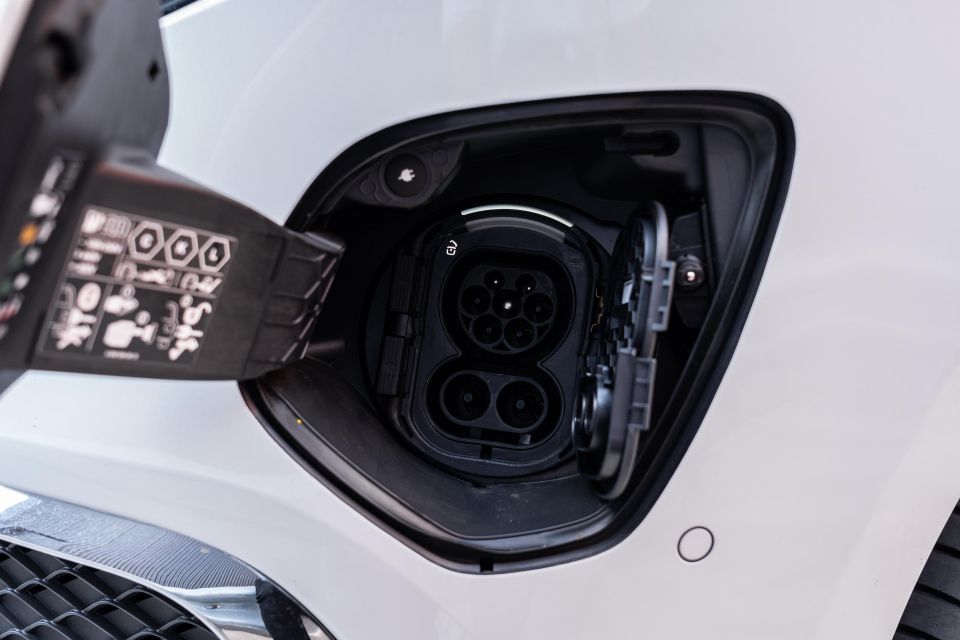
Energy is stored in a 90kWh lithium-ion battery pack, located low in the floor so as not to compromise interior space over the diesel.
The driving range on the NEDC lab test is 418km based on efficiency of 26.3kWh per 100km, whereas the more realistic WLTP test claims 340km. If you’re ferrying seven occupants and gear at highway speeds it will be worse, but that’s no different to a combustion vehicle.
In our experience you should plan for efficiency of between 28kWh per 100km and 30kWh per 100km, and a range of 300-320km in normal driving including highways and motorways.
The EQV’s pack can be recharged on an AC wall box from empty to 100 per cent in about 10 hours, or from 10 to 80 per cent on a DC rapid-charger in as little as 45 minutes depending on the charger’s output capabilities.
There are driving modes that tweak the balance of performance and range (Eco, Eco+, Comfort and Sport) and four levels of brake energy recuperation which adjust the degree of resistance when you’re off both pedals and coasting. These are controlled by paddle shifters.
The high seating position and big windows give a commanding view of the road ahead, and the seat has ample adjustments and a few memory presets.
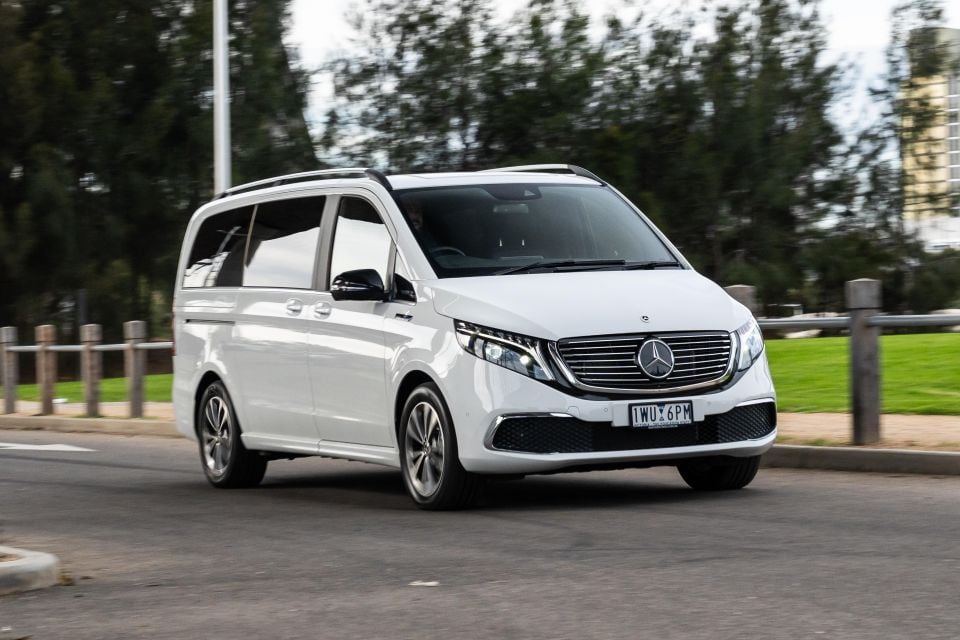
Strangely for an electric car, you need to use a physical twist key – a plastic fob that goes into a slot to the left of the wheel. But upon turning it you’re greeted by… nothing. Silence. Serene refinement beats diesel rattle in a vehicle like this.
Electric motor drive makes so much sense for a vehicle focused on occupant comfort, not just because it reduces noise and vibrations, but on account of its smooth and (single-speed) linear power delivery.
It’s not rapid, mind. With 150kW and 365Nm on tap it’s not gutless, but it is heavy. Very heavy. It weighs 2902kg, which explains the leisurely 0-100km/h time of 12.1 seconds without passengers.
It never had issues getting off the mark or keeping up with traffic though, and proved quite a serene and relaxed highway cruiser at 110km/h.
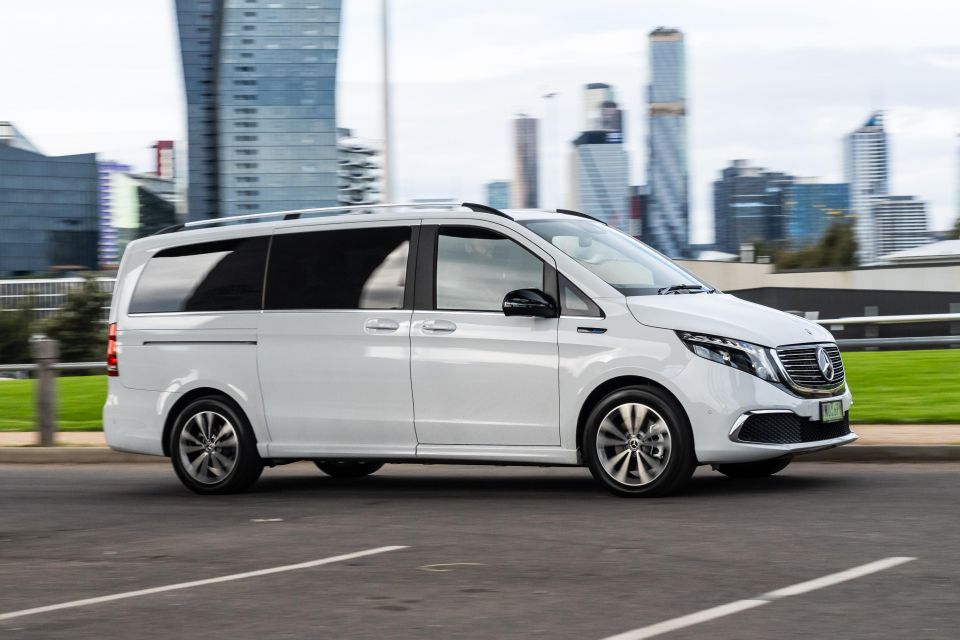
In terms of energy efficiency, I averaged between 28kWh per 100km and 30kWh per 100km, meaning a likely range of 300-320km.
In town you’re swiftly aware how big the EQV actually is, not so much in terms of length (5140mm) but more in terms of width (2249mm) and height (1960mm, which is fine for most multi-story car parks).
Yet the light steering and good visibility make it easy to drive even in tighter spots.
I found the maximum ‘D- -‘ regenerative braking mode helpful around town in stop and start traffic too. It’s not full one-pedal driving, but slows you down smoothly and harvests more energy.
Those new to EVs might find it jarring when you’re switching from resistance-like deceleration (regenerative braking if it’s engaged), to the firmer mechanical brakes, but you adapt and soon it becomes a benefit.
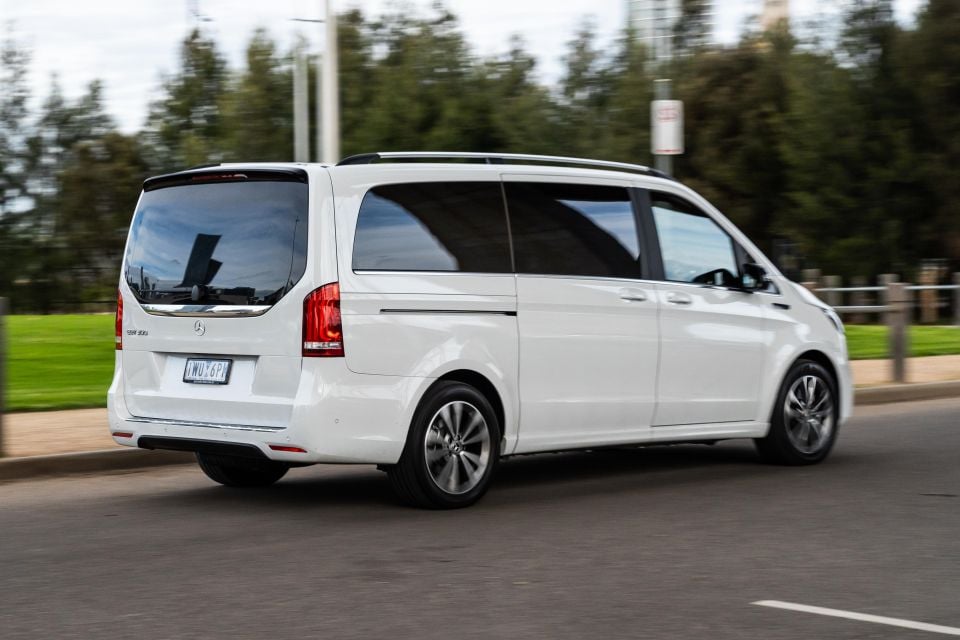
In terms of driving dynamics, it’s very much a comfort-focused vehicle. Even with the extra battery weight low down, it feels big and barge-like in corners, and has a tendency to float and secondary bounce after sharp inputs like a speed bump.
It’s super-refined however, sturdy and light on wind noise and road roar for occupants. The standard air suspension with two heights also smooths out the ride further.
In terms of payload, it’s rated to carry 598kg (based on its GVM of 3500kg and its 2902kg kerb weight, inclusive of a 75kg driver).
The driver-assist aids comprise stalk-controlled adaptive cruise control with a speed-limiter function, blind-spot assist, and a lane-departure aid – but only one that vibrates the steering wheel, rather than adding steering input.

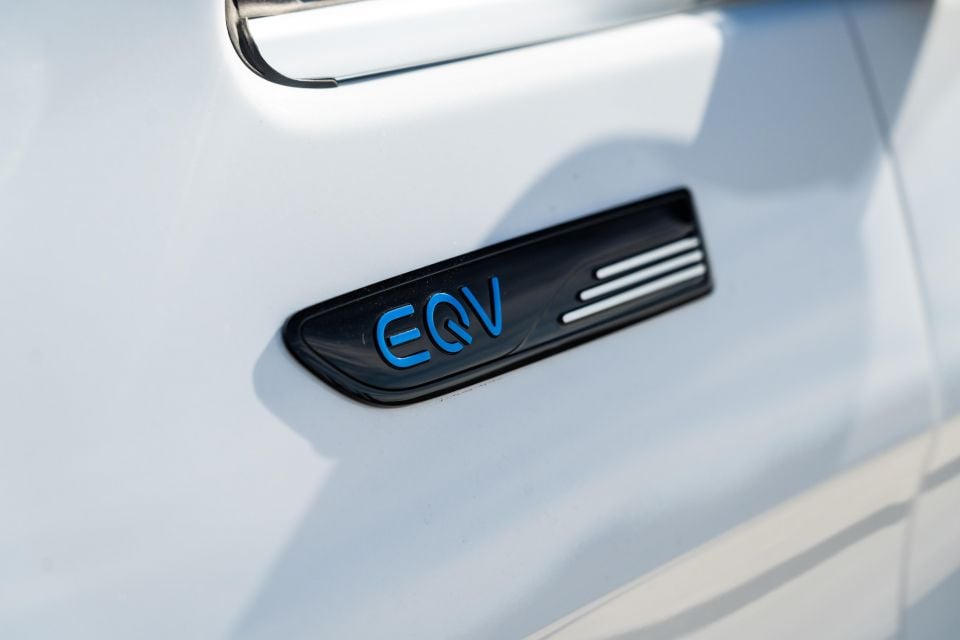
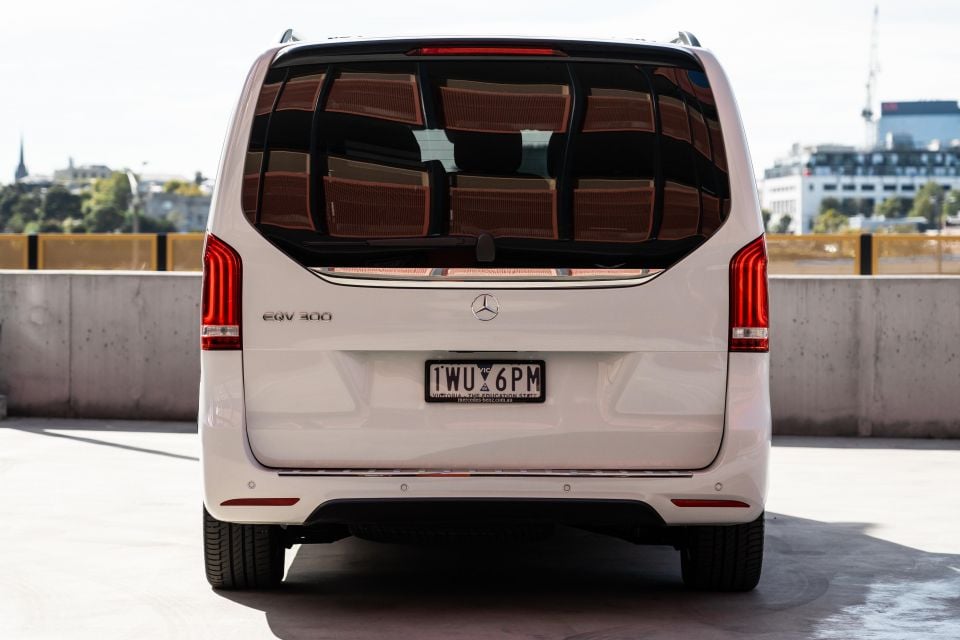
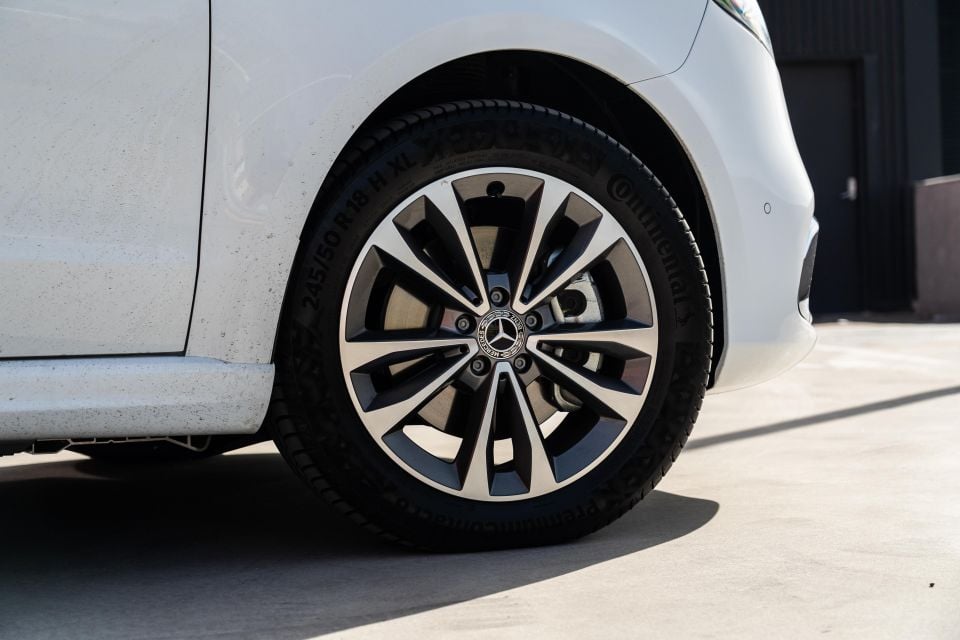
Where expert car reviews meet expert car buying – CarExpert gives you trusted advice, personalised service and real savings on your next new car.
Exterior

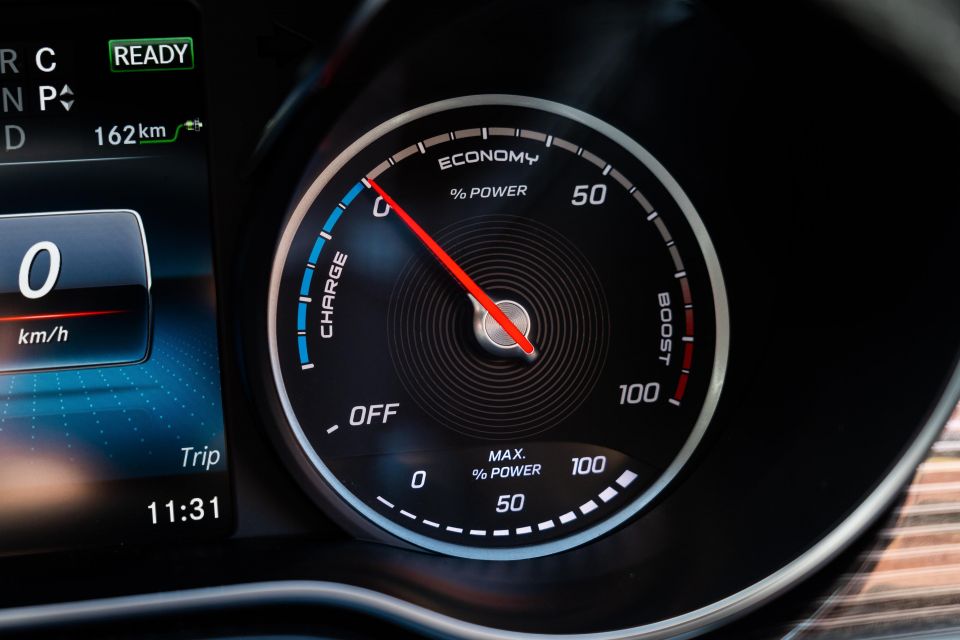
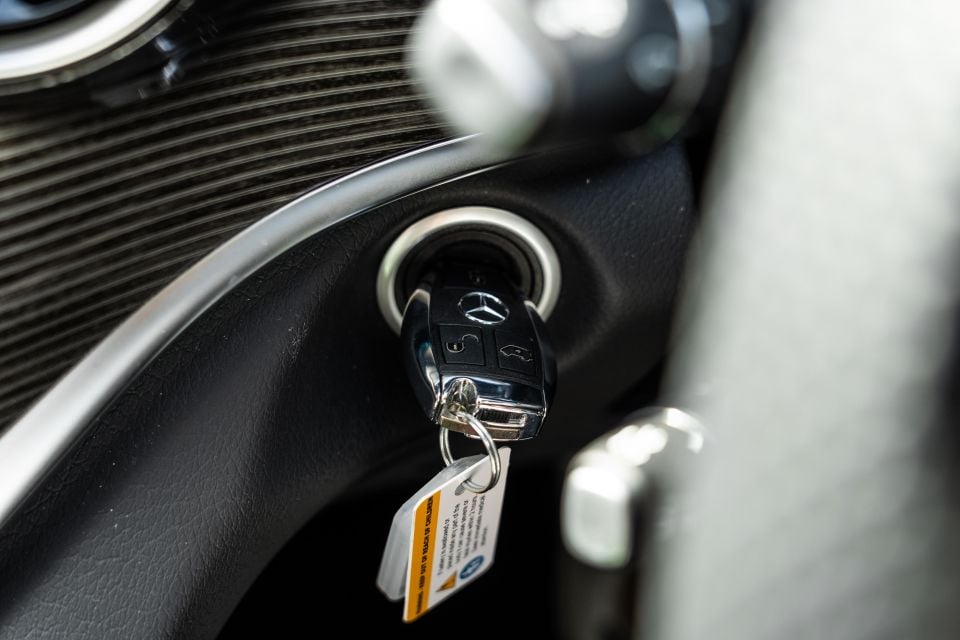
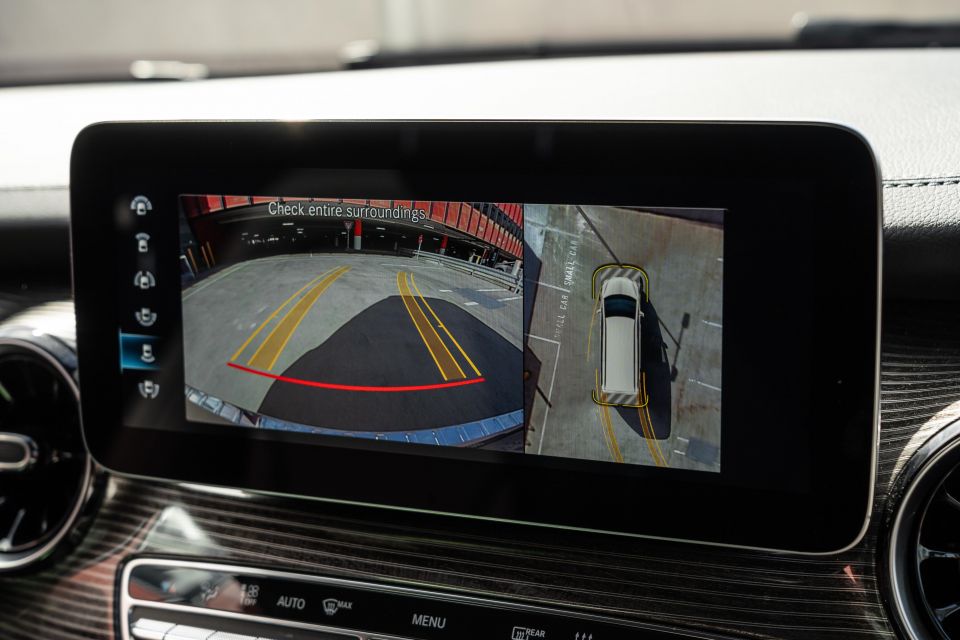
Interior
Options
The five-star ANCAP rating for the Vito and V-Class expired as of 1 January, 2023, and therefore the entire range remains unrated.

Standard safety features include:
The EQV is covered by a five-year, unlimited-kilometre warranty for private use (five years or 250,000km for commercial use), and eight years or 160,000km for the battery pack.

Servicing is “recommended” once a year or every 40,000 kilometres, with service plans available ranging from $1252 (three services) to $2149 (five services).
Also included is a one-year Chargefox subscription with unlimited charging at all of its fast charging stations around Australia. Mercedes-Benz Australia also sells its own branded wallbox home or business AC charger capable of 7.2kW (single-phase) or 22kW (three-phase).
I’m not a fan of the location of the charge port in the front bumper. Seems vulnerable to damage from a basic frontal bingle?
To get a better understanding of what sort of value-for-money the EQV might represent against the $40,000 cheaper V250d diesel, you can crunch the numbers using a scenario – but of course everyone’s needs will be different.
For a hypothetical let’s suggest a luxury airport transfer company that requires a people mover to do 1000km per week, over a five-year lease expected to cover 260,000km.
Using government fuel efficiency data – in reality, these numbers are almost always too low but let’s use them for argument’s sake – the V250d uses 7.4 litres of diesel per 100km, meaning 74L per week at a cost of around $150 based on current prices.
That’s around $8000 per year or $40,000 over five years or 260,000km, assuming all variables remain equal.

If the hypothetical shuttle company has invested in rooftop solar and a wallbox for overnight charging, it might be feasible to run the EQV for free and thereby make back the money in full.
But if they’re using the grid at a rate of 20 cents per kWh, as is the rough average in Victoria, then it would cost about $50 per week to cover the 1000km (at the advertised consumption of 26.3kWh per 100km), $2600 per year, and $13,000 over five years.
If the operator uses DC public charging, which can cost up to 60c per kWh, then this equation obviously changes further – even with the free one-year complimentary Chargefox subscription supplied with the vehicle.
I added 60 per cent charge (54.38kWh) to the battery on a Chargefox ultra-rapid charger at peaks of 108kW in 33 minutes. That’s equivalent to about 200km range in a tick over half-an-hour. The cost without the free membership of this would be $32.62.
The point of all this? The value equation depends on many factors, but you can expect cheaper running costs overall to at least partially offset the sticker price premium.
It’s not cheap, but for business users focused on running costs and occupant comfort, the Mercedes-Benz EQV luxury shuttle is likely to find buyers.
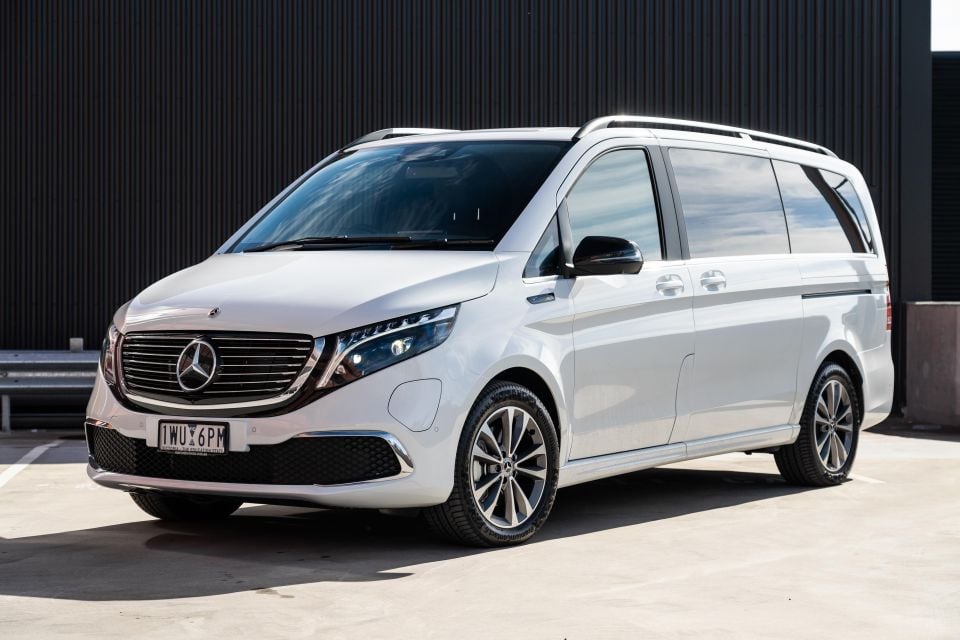
It’s a big and heavy vehicle with some range limitations, but it’s the leader in a small field right now.
On a broader note, vehicles like this that tend to do predictable weekly mileage, often have a base to return to, and which rack up high mileage over a lease, lend themselves particularly well to being electrified in a sustainable way.
Click the images for the full gallery
Where expert car reviews meet expert car buying – CarExpert gives you trusted advice, personalised service and real savings on your next new car.


Max Davies
48 Minutes Ago


William Stopford
17 Hours Ago


Ben Zachariah
18 Hours Ago


Derek Fung
18 Hours Ago


Matt Campbell
1 Day Ago


William Stopford
2 Days Ago